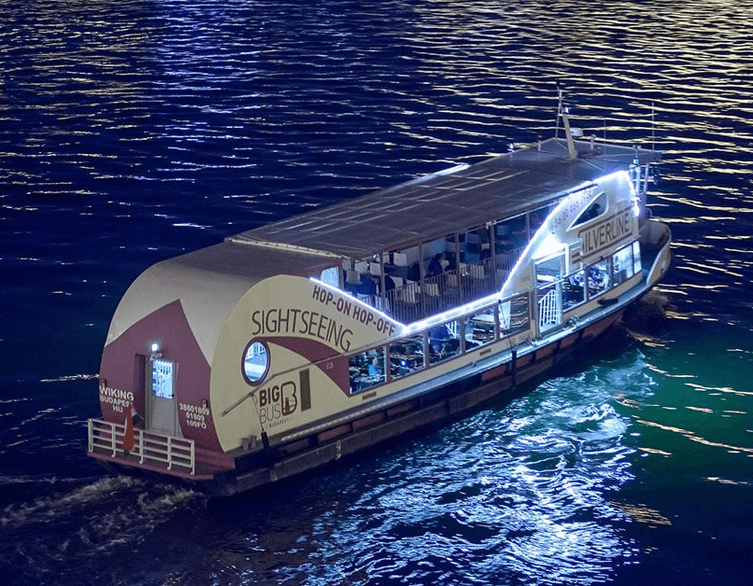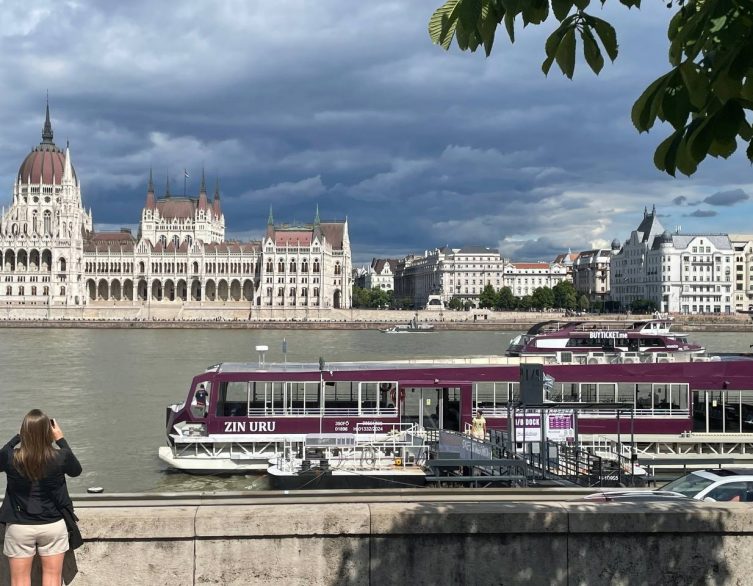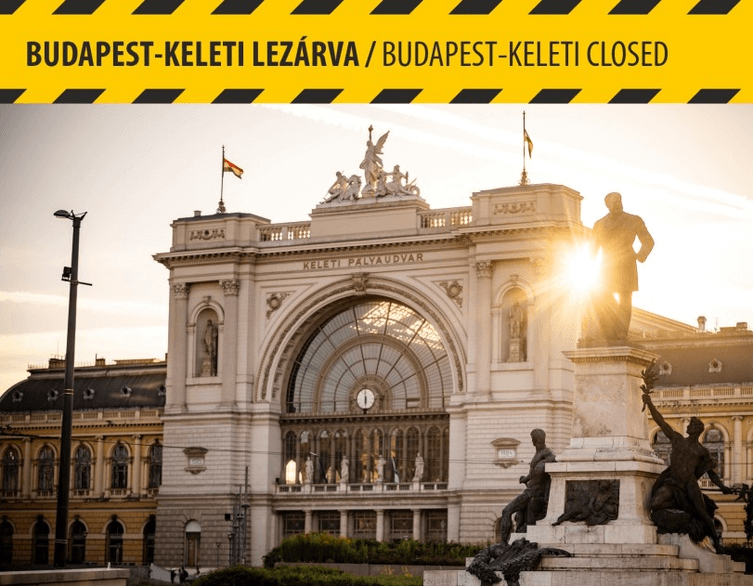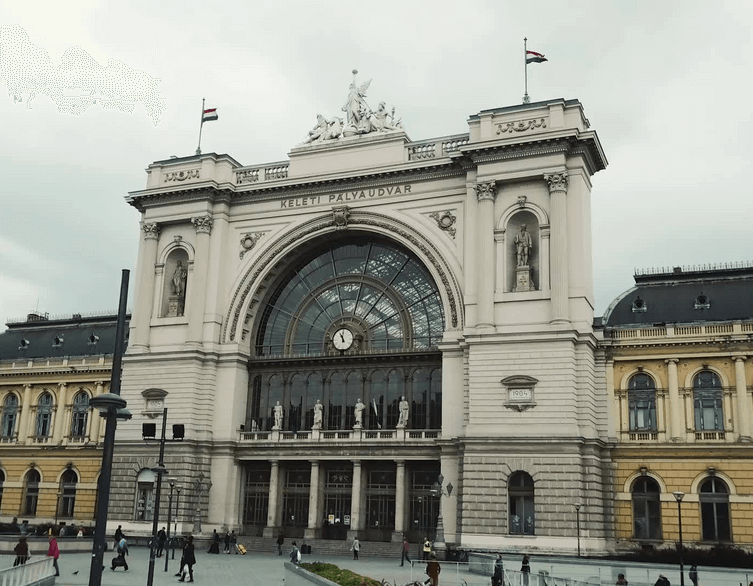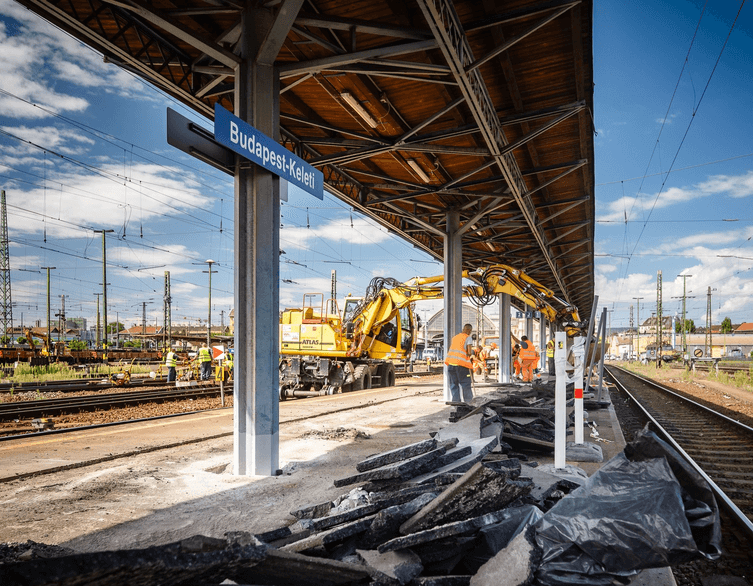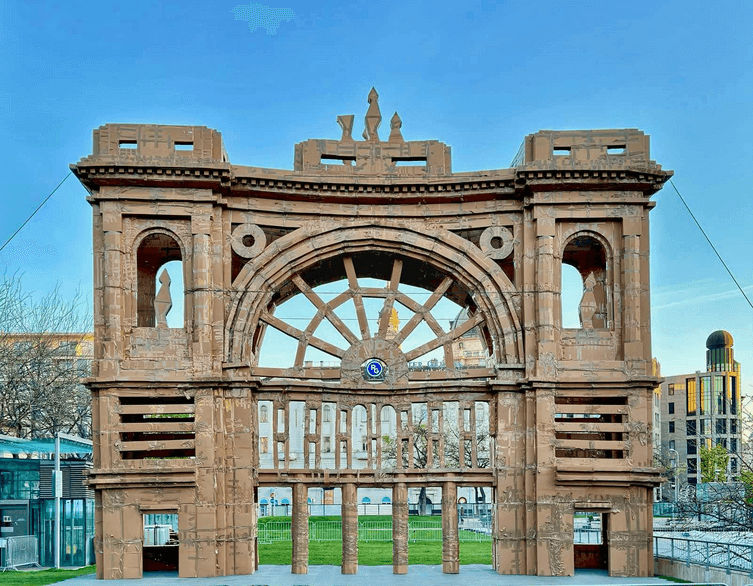Celebrating 140 Years of Budapest’s Iconic Keleti Train Station
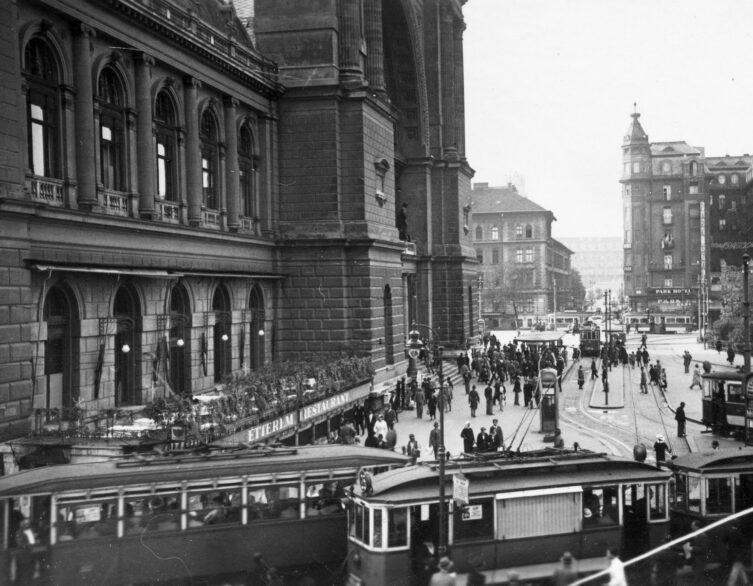
Budapest’s Keleti train station, one of the city’s most recognizable landmarks, is celebrating its 140th anniversary this year. Opened in 1884, this architectural gem has been a vital transportation hub and a witness to the city’s history for nearly a century and a half.
Architecture
Designed by chief engineer Gyula Rochlitz with a steel structure engineered by János Feketeházy, Keleti station immediately became a symbol of Hungary’s capital upon its unveiling. The station’s grand facade, topped by a soaring glass train shed, represented the pinnacle of railway architecture at the time. Innovative features like electric lighting throughout the station were considered a marvel in late 19th century Europe.
Allegorical sculptures adorning the facade depicted figures associated with transportation, economics, and industry, lending the building an almost cathedral-like grandeur. Inside, frescoes by renowned Hungarian painters Mór Than and Károly Lotz graced the ticket hall, elevating the station to the level of a public art gallery. A royal waiting room also showcased Keleti’s prestigious status.
Passengers Through Time
In its early decades, Keleti functioned as Budapest’s gateway to the world. As rail travel represented the quickest and most comfortable way to traverse Europe, Keleti welcomed countless dignitaries like Italy’s King Victor Emmanuel III. The station also bid farewell to Hungarian Olympic teams and hosted stately funerals like that of Prime Minister Gyula Gömbös in 1936.
Best deals of Budapest
Even in the 20th century, Keleti retained its role in welcoming foreign leaders as a protocol venue. Soviet premier Nikita Khrushchev, Yugoslav president Josip Broz Tito, and North Korean leader Kim Il-sung all pulled into Keleti aboard their official trains during the Cold War era. The station thus earned a reputation as Budapest’s own “red carpet.”
Keleti offered top-notch amenities for regular passengers as well. Porters and luggage carts scurried between platforms. The Utastourist souvenir shop in the ticket hall sold Western products. Elegant restaurants and bistros served travelers in style. Keleti even pioneered the self-service food automats popular in the mid-20th century.
Of course, the station also saw its share of average citizens and new arrivals to the city looking for opportunity. The station’s location near working class districts meant Keleti represented a starting point for many common Budapest residents. Budget-minded passengers frequently crowded the station during the socialist years.
The Station Throughout History
Keleti could not avoid the upheavals of history. It suffered damage during World War II, with parts of the arrivals wing destroyed by fire. The allegorical statues on the facade also crumbled from exposure to coal smoke over the decades, only to be replaced in 2003. Most recently, Keleti made global headlines in 2015 as a temporary refuge for migrants during Europe’s refugee crisis.
The station’s surroundings have evolved considerably too. Original steam and diesel locomotives gave way to electric trains. The M2 metro’s construction in the 1960s sunk the Baross Square in front of the station to accommodate underground platforms. Prized features like the neon signs that once bathed the square in a futuristic glow have mostly disappeared as well.
Nevertheless, Keleti’s allure endures. Fully restored in the 1980s and fitted with modern passenger facilities, the station remains a treasured example of Budapest’s architectural heritage. It still ranks as one of Hungary’s busiest transit terminals, with an estimated 410 trains and 17,000 passengers passing through daily.
Celebrating 140 Years
To celebrate the station’s 140th anniversary, the Hungarian Railways has organized a unique analog photography competition, inviting participants to capture the nostalgic atmosphere and architectural beauty of the station. This competition is perfect for those who love the art of film photography, fondly remember the days of traditional photo development, or have been swept up in the resurgent “analog fever.” Participants are encouraged to bring their cameras and immortalize the special ambiance of the Keleti Train Station from their own perspective.
For those who prefer digital photography, a separate competition has been announced. Participants are invited to capture the station’s essence and architectural splendor using their digital cameras, showcasing the iconic Budapest landmark through their unique lenses and perspectives.
In addition to the photography competitions, a short story writing contest has been launched, inviting writers to explore the countless stories, both joyful and sorrowful, that have unfolded within the walls of the Keleti Train Station over the past 140 years. Participants are encouraged to imagine the lives and events that have been connected to this iconic location, and to weave tales that bridge the past and the present. The competition calls for short stories ranging from 3,500 to 5,000 characters (including spaces), focusing on themes such as the Millennium, World War I, World War II, the station’s catering services, the reception of Olympic athletes in 1948, the station’s role as a central hub for rail transport, its architecture, and various scenes from daily life at the station.
To further commemorate the station’s 140th anniversary, a collection of 14 short stories, each representing a decade of the station’s history, has been commissioned. Well-known writers and enthusiastic amateurs have contributed to this project, offering glimpses into the atmosphere and life of the station over the past century and a half. These fictional stories showcase the station’s presence, sometimes in a prominent role and other times as a natural, unobtrusive backdrop to various life situations and historical events. The resulting collection, titled “14 Decades, 14 Stories,” is accompanied by period photographs illustrating each tale.
As the Keleti Train Station marks its 140th year, these competitions and initiatives serve to highlight the enduring significance of this magnificent building, not only as a vital transportation hub but also as a cherished part of Budapest’s cultural heritage. By engaging the public in creative expressions of their connection to the station, the Hungarian Railways aims to foster a deeper appreciation for the role this iconic structure has played in shaping the city’s history and identity. The Keleti Train Station stands as a testament to the enduring legacy of Budapest’s architectural and engineering achievements, and its 140th anniversary celebrations promise to further cement its place in the hearts and minds of the city’s residents and visitors alike.
While much has changed since Emperor Franz Joseph officially opened Keleti station in 1884, its magnificence and relevance remain undiminished. As a feat of engineering, a historic site, and a beloved Budapest icon, Keleti station has earned its place in Hungary’s cultural memory. Here’s to another 140 years of service for this impressive railway cathedral.
Image source: Fortepan
Related news

















